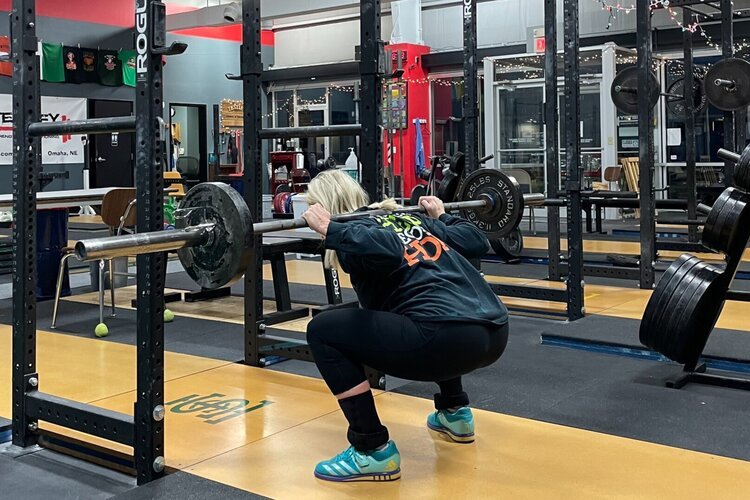3 Ways You're Ruining Your Squat!
/Let’s cover a few mistakes that you might be making with your squat, and then let’s fix them fast.
Mistake #1: Trying to Stay Upright
When you squat, don’t confuse a vertical back with a straight back. We want a straight back - it’s more efficient - but we’re not all that interested in a vertical back. Of course, your back will be vertical at the beginning and the end of the squat (i.e., when you’re standing up), but throughout the squat, it will (and should) move through a range of angles.
To fix this problem, as you start your squat, reach back with your hips and simultaneously point your chest at the floor as you descend (watch the included video for a demonstration). In other words, get leaned over as you descend - it will put you in a stronger, more efficient position at the bottom of the squat so that you can effectively drive your hips up out of the hole. Trying to stay upright (and trying to get upright too soon on the ascent) simply makes your squat harder and less efficient than it should be.
Mistake #2: Not Shoving Your Knees Out
When you squat, your knees travel forward - after all, that’s what knees generally do when they bend, but you are also going to shove them sideways, i.e., you’re going to shove your femurs apart from one another. We don’t want your knees to travel only forward; instead, your knees are going to travel both forward and out (i.e., forward and sideways).
To accomplish this, take a stance with your heels roughly shoulder-width apart, and then point your toes out at about a 30 degree angle. As you start to descend, point your knees in the direction of your toes so that your femurs are parallel to your feet (again, watch the included video for a demonstration).
When you shove your knees out, you allow your adductors (i.e., your groin muscles) to contribute to the lift, and this makes for a stronger squat. Shoving your knees apart also means that you get your femurs out of the way of your hips and torso, and this, in turn, makes it easier to achieve proper depth in the squat.
Mistake #3: Arching Your Back
You don’t want an arched back; in other words, you don’t want your spine in a position of overextension. Granted, you don’t want a rounded or flexed back, but we certainly don’t want an arched back either. An arched back is neither a comfortable nor a strong position in which to support a heavy load. You simply want your back to be straight and rigid as this is very efficient for transferring force from your hips and legs to the barbell. Watch the included video for a demonstration of what to do (and what not to do).
If you find yourself arching your back before or during the squat, remind yourself to clamp down hard by contracting your abs as tightly as you can. If this doesn’t work, you may need to use an overcue and tell yourself to “round your back” just a bit. However, remember that this is an overcue and be conservative with its use - you don’t actually want a rounded back, but you may find that this helps you successfully achieve a straight back.
As always, we hope this helps you get stronger and live better.
-Phil
PS: Whenever you want even more Testify in your life, here are some free resources:
Book a free intro and strategy session with us HERE.
Pick up a free copy of Testify’s Squat Guide: 12 Tips to Improve Your Squat Now HERE.
Get our free weekly email - containing useful videos, articles, and training tips - HERE.
Follow Testify on Instagram HERE.
Subscribe to Testify’s YouTube channel HERE.
(Some links may be affiliate links. As an Amazon Associate, Testify earns from qualifying purchases.)



